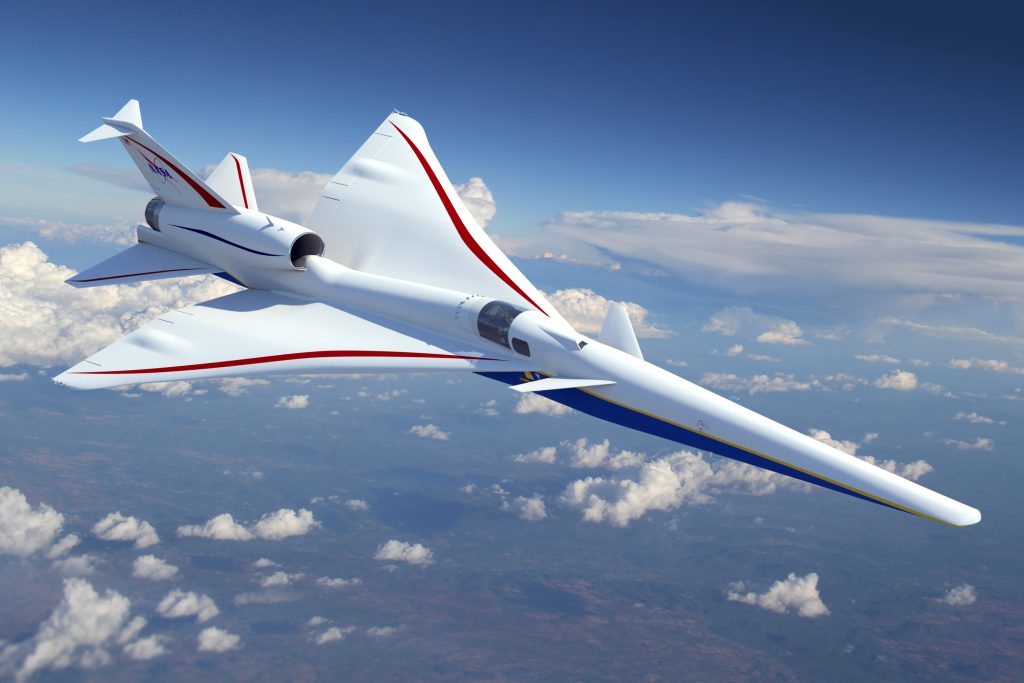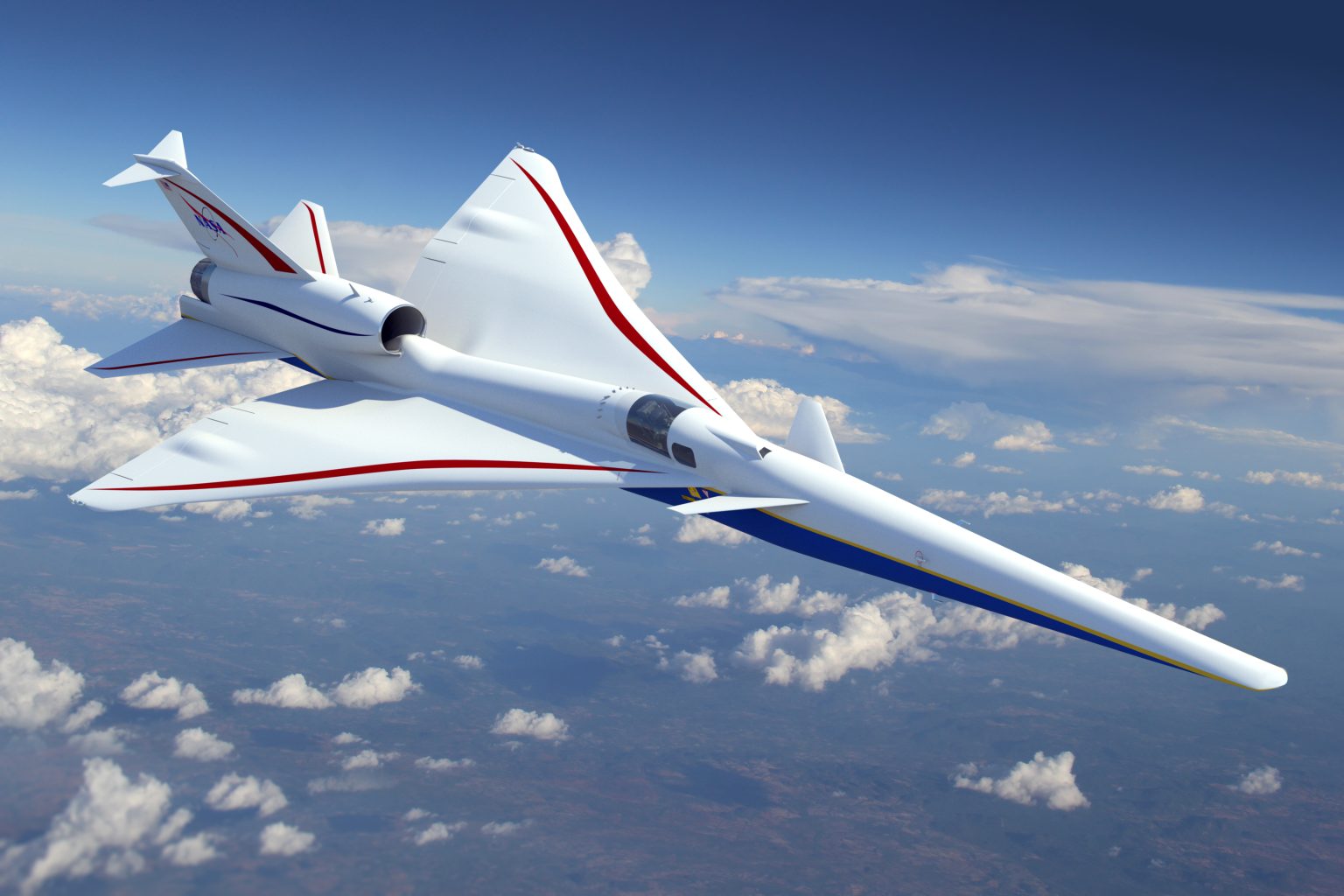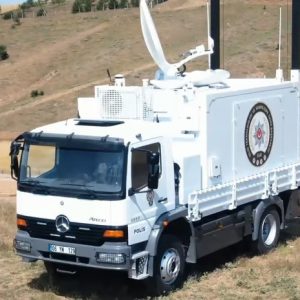The NASA X‑59 quiet supersonic aircraft—developed with Lockheed Martin Skunk Works under the Quesst mission—has moved into the final pre‑flight envelope: taxi trials, integrated systems checks, and safety validations. NASA now frames first flight as a stepwise campaign beginning with a low‑altitude, roughly 240‑mph loop to verify airworthiness before progressing toward Mach 1.4 and the program’s central claim: a controlled sonic thump that communities can tolerate over land. That data could unlock the most consequential civil‑aviation rule change in half a century.

Editor’s note: Despite frequent shorthand online, the NASA X‑59 is not a drone. It is a piloted experimental X‑plane built to prove quiet, over‑land supersonic flight. This enriched analysis aligns the story with current program status, technical milestones, and policy implications.
Why the X‑59 Matters Now
For commercial and defence stakeholders, the NASA X‑59 quiet supersonic effort is less about speed and more about permission. Since the 1970s, regulators have barred civil supersonic operations over land due to disruptive sonic booms. X‑59 flips the script: prove the boom can be shaped into a lower‑intensity acoustic signature, measure how people actually perceive it, and hand statistically robust findings to regulators and ICAO standards bodies. If the thresholds are codified, we enter an era where point‑to‑point city pairs reclaim hours without exporting noise costs to communities.
Program State of Play: Delay, Discipline, Delivery
The program has slipped from early ambitions, but the current trajectory is disciplined. After engine test challenges and additional ground‑integration work, NASA took delivery of the aircraft in 2025 and initiated progressive taxi and systems testing. The first flight is now framed as the opening move in a carefully gated safety sequence. In practical terms, that means X‑59 will fly when every subsystem—flight controls, vision systems, telemetry, and the elongated forebody’s aero‑elastic behavior—cohere under load and risk.
Key Facts
Mission: Generate community‑response data to enable new standards for over‑land supersonic flight.
Configuration: Single‑pilot, 99.7‑ft X‑plane; GE F414 engine; research speed Mach 1.4 (~925 mph) at ~55,000 ft.
Noise Target: Low‑boom signature targeting ~75 EPNdB equivalent “thump,” sized to be non‑startling in community trials.
Test Sequence: Low‑speed loop (~240 mph) → envelope expansion → supersonic community overflights → regulator data package.
Strategic Payoff: Data for FAA/ICAO to set acceptable noise thresholds; de‑risking a civil supersonic market.
Engineering the Quiet: How the Low‑Boom Works
Traditional supersonic aircraft generate strong bow and tail shocks that coalesce into a loud boom at ground level. The NASA X‑59 quiet supersonic design treats the whole airframe as a shock‑shaping instrument. An extreme, needle‑like forebody distributes pressure rises; carefully tuned canards, inlets, and volume placement stretch and stagger shock formation; blended lifting surfaces manage tail shocks. The aim is not to eliminate the boom—physics won’t allow it—but to smooth its amplitude and temporal profile so that it registers as a muted, non‑startling thump to most listeners.
That shaping burden cascades into other design choices. Because the nose is so long, the pilot has no traditional forward view. Instead, a forward‑vision system fuses externally mounted cameras with image processing and displays. Control‑law tuning and aero‑elastic modeling must keep the long fuselage from feeding unwanted oscillations back into the flight‑control system. The quiet boom is an orchestration of geometry, controls, and materials science, not a single trick.
From Palmdale to Policy: The Regulatory Path
Even a flawless flight campaign won’t flip a legal switch overnight. After initial airworthiness flights, NASA will conduct community overflights, surveying perception in diverse environments—coastal, urban, suburban. The resulting dataset feeds into national and international standards processes. For industry, this is the hinge: only when acceptable over‑land noise limits exist can business cases for supersonic transports close, unlocking capital for engines, airframes, and certification programs. The NASA X‑59 quiet supersonic mission is therefore less a product demo and more a policy instrument backed by flight data.
Defence & Aerospace Implications
Operational Reach: If regulators accept low‑boom thresholds, militaries gain more flexible supersonic corridors in peacetime and training. That eases readiness constraints and can shrink time‑to‑task for rapid‑response missions without the political friction of boom complaints.
Technology Spillover: Low‑boom shaping informs stealthier strike profiles and reduces acoustic detectability cues tied to overpressure spikes. The vision‑system architecture, advanced flight‑controls, and aero‑elastic management translate to future long‑range, high‑altitude ISR and escort concepts.
Industrial Base: A validated quiet supersonic regime catalyzes a supply chain—from high‑temperature composites to shock‑tolerant avionics and low‑drag inlets—spreading R&D risk across civil and military programs. For clusters like Türkiye’s, participation pathways include materials, sensors, and test services aligned with the low‑boom stack.
Risk Register: What Could Still Slow the Program
Integration Complexity: The long‑nose geometry and camera‑based forward vision create novel failure modes that demand exhaustive validation. Any instability in control‑law interactions with aero‑elastic modes will hold the line.
Acoustic Variability: Quiet‑boom metrics must remain repeatable across temperature gradients, wind shears, and humidity bands. Outliers in community trials could require additional shaping tweaks or operational constraints.
Policy Timelines: Standards work is deliberative by design. Even with compelling data, FAA and ICAO processes will pace the market’s opening. The NASA X‑59 quiet supersonic mission accelerates knowledge, but not necessarily bureaucracy.
Related Analysis
For the strategic context on high‑speed flight and counter‑air trends, see our internal brief: The race for hypersonic missile defence.
Conclusion
The NASA X‑59 quiet supersonic demonstrator is a scalpel aimed at a single—but decisive—barrier: over‑land noise. If its community trials validate a predictable, tolerable thump, regulators gain the empirical footing to revisit a decades‑old ban. For airlines, that outcome redraws route maps; for defence planners, it expands training and transit flexibility; for the supply chain, it signals where to place long‑horizon bets. With first flight now approached at the “speed of safety,” the industry’s most valuable payload may be the standards‑grade dataset the X‑59 is built to deliver.
Further Reading
[1] NASA — X‑59 program update and first‑flight approach. Link
[2] NASA — Quesst mission overview and aircraft facts. Link | Aircraft
[3] Lockheed Martin — X‑59 Quiet Supersonic program page. Link
[4] AIAA News — X‑59 gearing up for flight‑test phase (Sep 2025). Link
[5] NASA NTRS — Commercial Supersonic Technology (Spring 2025) priorities and regulator‑facing goals. PDF
Internal link: Defence industrial base readiness: where to invest now











